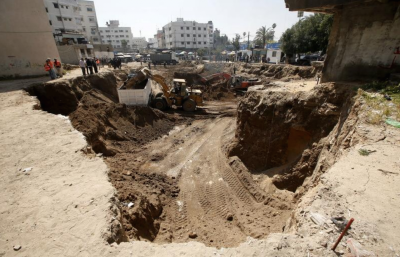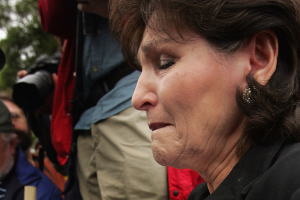Archaeology Discovery: 1,600-Y-O Mosaic Depicts Key Role of Women in Early Church
A 1,600-year-old mosaic discovered in western Galilee in Israel suggests that some women played a key role in the early church, with one 5th century female donor presumably the namesake of a woman described as assisting Jesus Christ in the Bible.
The Greek-language mosaic in question dates back to the 5th century and memorializes a woman by the name of "Sausann," or Shoshana, who was one of the donors that helped in the construction of a church village, according to The Times of Israel.

"Unusual in a patriarchal society, the donor Sausann is credited in the inscription independently of any spouse or male guardian. This Sausann is thought to have been a woman of some standing, perhaps following in the footsteps of her presumed namesake, the female disciple Susannah," The Times of Israel reported.
Susannah is mentioned in Luke 8:3 as one of the women who helped support Jesus and His disciples "out of their own means."
The mosaic, one of seven inscriptions, were found this past summer during excavations at three Byzantine churches.
Kinneret College archaeologist Mordechai Aviam, who led the excavations, explained that an independent woman donating money to the church provides clues about the social structure in the Galilean village at the time.
The researchers, alongside a multidisciplinary partnership of scholars, are pooling together efforts in order to conceptualize what Christian life was like in the 4th and 5th century in the region.
One large five-meter long text talks about early church controversy concerning the divinity of Jesus and his mother Mary being depicted as the "God-bearer," which led to a schism in the Byzantine church.
Aviam stated that while stone vessels and coins give archaeologists portions of select history, inscriptions are like "finding a book" in that they give "a clear history."
The churches' inscriptions "tell the stories of who built the church and when, the church hierarchy, names of donors ... they give us a lot of information," he said.
The role of women in the early church has been the subject of various theological debate and discussion. Christian Hollywood producers Roma Downey and Mark Burnett highlighted the stories of several women in the early church period in their 2015 NBC show "A.D. – The Bible Continues."
Downey told The Christian Post at the time: "That was important to us — so often history written by men, about men, and you look at these scenes and you think, 'Where are the women.'"
She added, "You wonder, 'What were the women doing?' Each episode, we would approach it with that in mind."
Downey pointed out that Jesus first appeared before Mary Magdalene after the resurrection.
"The women were there, they are just as key and important, as highlighted in the first episode when it was to a woman that Jesus first appeared," the actress told CP. "As a woman, she was honored that it was to her He first showed up."




























